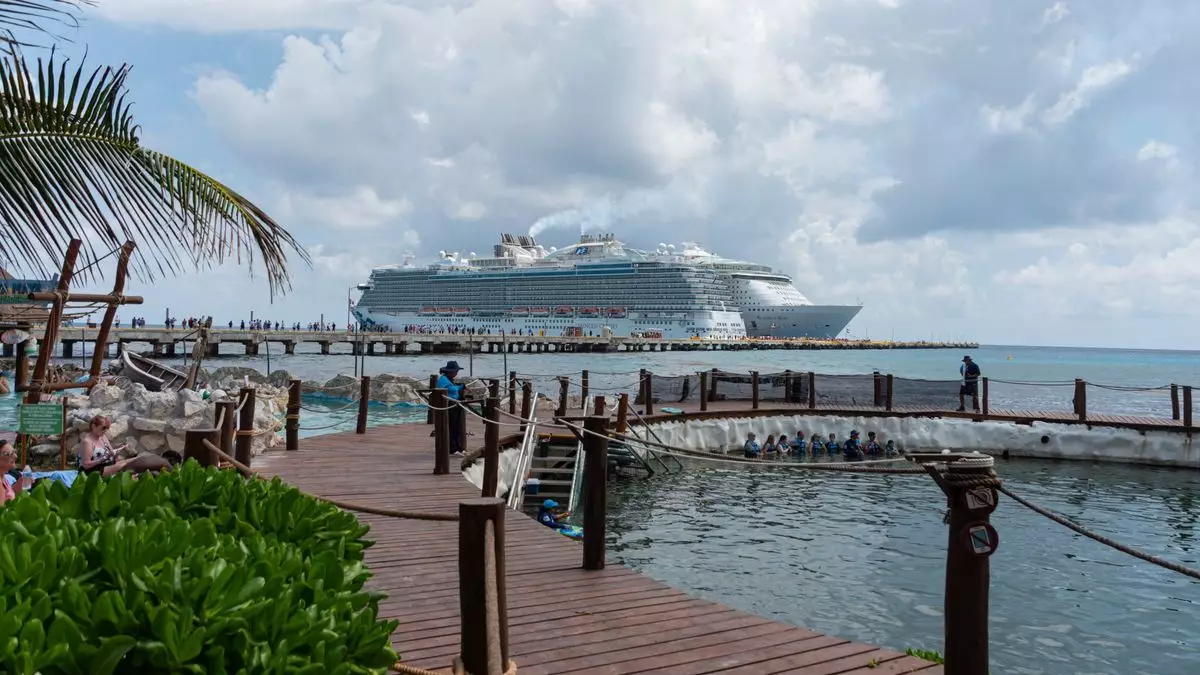In a controversial move, Mexico’s legislative body has sanctioned a $42 head tax on cruise passengers, a decision anticipated to come into effect on January 1. This new tax raises several questions regarding its potential implications for the cruise industry and the nation’s economy as a whole. With cruise lines expressing anxiety over the change, experts are mixed in opinion about the tax’s long-term effects. It has sparked debates over its viability and place in the broader tourism landscape.
Cruise industry representatives like the Florida-Caribbean Cruise Association (FCCA) have aired their concerns directly to Mexican President Claudia Sheinbaum. In a letter, they emphasized that the imposed tax could make cruising in Mexico extraordinarily costly—213% higher than the average fee at Caribbean ports. Michele Paige, CEO of FCCA, warned that such surging costs could effectively price Mexico out of the cruise market, compelling companies to reconsider their travel itineraries. The Mexican Association of Shipping Agents corroborated these fears, predicting that the new tax would redirect traffic to other Caribbean ports where passenger fees remain significantly lower.
The FCCA articulated that the notification regarding this tax was not only sudden but also left little room for cruise lines to adapt, generating confusion for passengers. The impression that the cruise experience may become riddled with unexpected costs could deter potential travelers who value predictability and transparency.
Contrarily, some experts like Andrew Leahey from Drexel University offer a nuanced view. He suggests that historical instances of tourist taxes in various regions haven’t led to significant declines in visitor numbers. Although an additional $42 fee might deter some, Leahey argues that for seasoned cruisers, such costs are often absorbed into the overall trip price, rendering them negligible. From this standpoint, a trip costing $1,800 adjusting to $1,842 may not incite a drastic change in travel behavior.
Moreover, the logic behind including a head tax has been framed as a move toward equitable treatment for all visitors, regardless of their mode of entry into the country. Mexico seeks to align the treatment of international tourists arriving by land, air, or sea, reflecting a broader strategy to streamline revenue collection.
Nonetheless, experts caution that any such changes in tourism economics could disproportionately impact regions that rely heavily on cruise-driven revenue, such as Quintana Roo, home to popular ports like Cozumel. The FCCA reports that cruise tourism constitutes 40% of Quintana Roo’s GDP, indicating just how vital this revenue stream is for local economies. As cruise ships contribute significantly through port fees—amounting to approximately $62.6 million during the 2023-24 cruise season—it raises concerns about the broader economic ramifications of fluctuating tourist interest.
Notably, tourism patterns are evolving. Tawnee Sons, a travel franchise owner, posits that this tax signifies a substantial increase in operating costs that could lower demand for trips to Mexican destinations. As families and groups seek more value-oriented options for vacations, the added head tax might discourage their interest in itineraries that include Mexican ports.
The timing of this tax amid increasing global trade tensions, particularly following remarks from then-President-elect Trump about tariffs, adds another layer of complexity to its implications. While it is uncertain whether the tax directly responds to tariffs, it is plausible that it may be perceived as a move to bolster funding for national security efforts, especially along the U.S.-Mexico border.
Local governments may find themselves squeezed between fostering tourism and addressing national policy demands. The influx of passengers from cruise ships contributes not only to local businesses but places additional demand on local infrastructure, signaling the necessity of balanced revenue generation strategies.
The introduction of Mexico’s $42 head tax on cruise passengers highlights urgent considerations for the cruise industry, local economies, and prospective travelers. While concerns from cruise stakeholders are significant, expert analyses suggest that the true long-term effects may not be as detrimental as anticipated, depending largely on how the costs are managed and communicated. As jurisdictions experiment with various taxation mechanisms to generate revenue, local acceptance and industry adaptability will ultimately determine the sustainability of such measures. Only time will unveil the full implications of this decision on Mexico’s status within the cruise tourism market and the economic well-being of its coastal regions.

